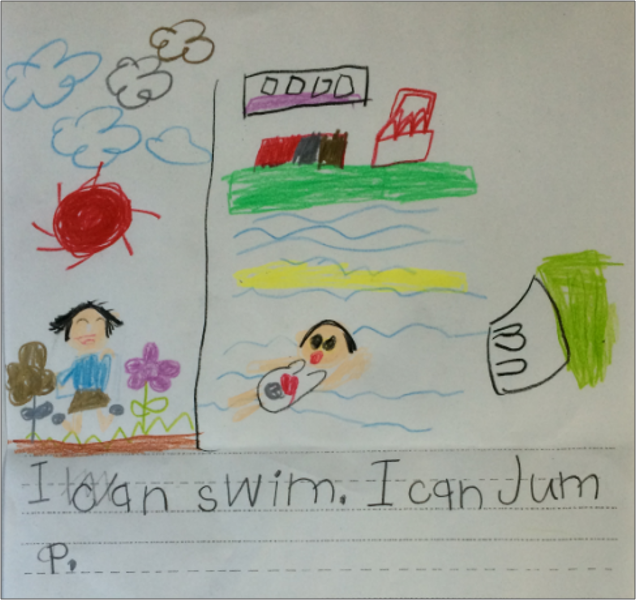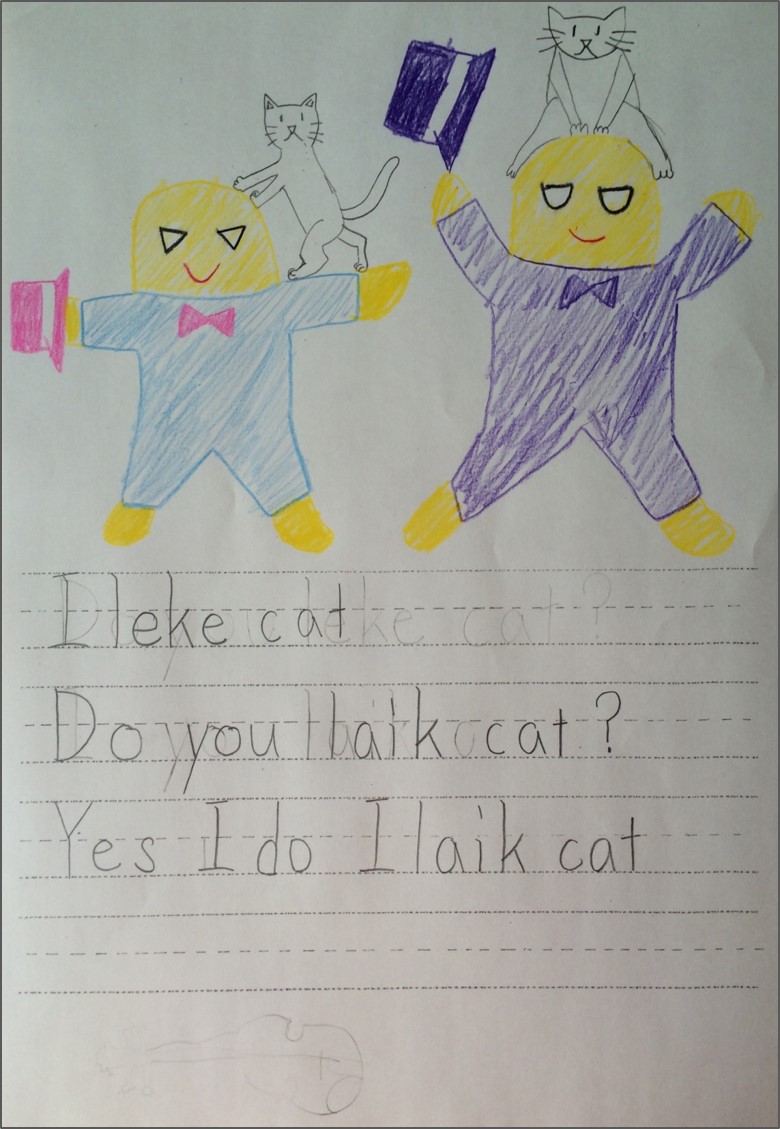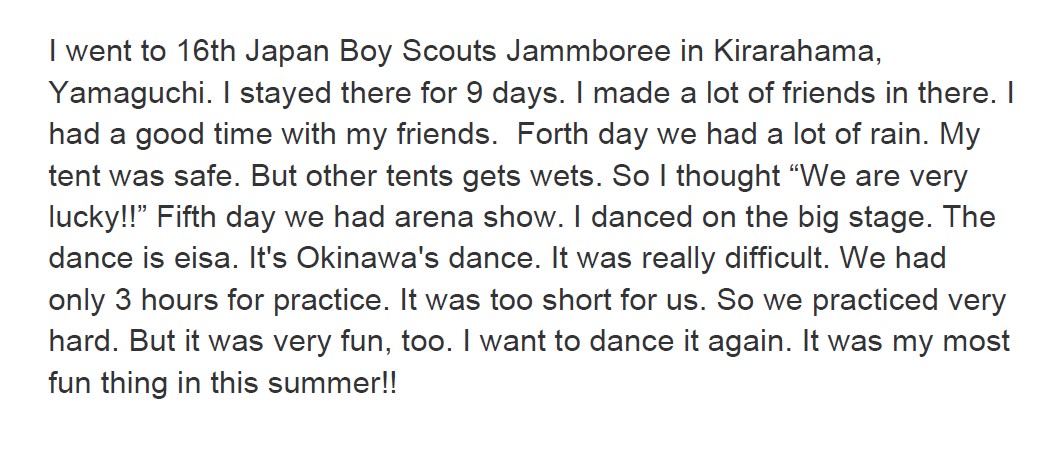 Most teachers include informal, ongoing assessment as an integral part of their lessons. Noticing what students know and don’t yet know helps us adapt our lessons and teaching strategies. Sometimes teachers hesitate to tell students when they are being assessed because they don’t want students to become anxious. However, if we present these assessment activities as a chance for students to see (and show us) how much they can do in English, they can be something that students look forward to.
Most teachers include informal, ongoing assessment as an integral part of their lessons. Noticing what students know and don’t yet know helps us adapt our lessons and teaching strategies. Sometimes teachers hesitate to tell students when they are being assessed because they don’t want students to become anxious. However, if we present these assessment activities as a chance for students to see (and show us) how much they can do in English, they can be something that students look forward to.
Colin Finnerty writes about the importance of providing students with the ‘right level of challenge’ in formal assessment. This is equally important in informal assessment activities, especially in young learner classrooms where teachers are juggling students’ cognitive and physical development, language levels and global skills objectives. Matching assessment activities to student levels can make the difference between a student feeling like a success (and working enthusiastically toward even more success) and feeling like a failure (and giving up on English in frustration).
The simplest way to make sure that your assessments are at an appropriate challenge level is to repurpose activities students are already familiar with. Students can focus on the language or skill you are assessing rather than figuring out what it is that they are supposed to do.
In my ELTOC webinar, we’ll look at different types of activities to assess both language and global skills, but in this blog post, let’s look at how these activities might work for assessing writing. First language writing development commonly categorizes children as emergent, transitional, or fluent writers (Culham, 2005). In foreign language writing development, these levels are determined more by literacy level than by age, because children begin studying English at different ages, some are already literate in their first language, and some are coming from a first language that has a writing system very different English. While writing skills may develop a bit differently in a second or foreign language, the categories are still useful for describing stages of growth.
Assessment activities for pre-literate learners
At this stage, students don’t really write. They are typically developing phonemic awareness of English sounds, and perhaps developing awareness of how the English writing system differs from their own. While you can’t assess a skill they haven’t yet developed, you can give them a picture or photograph and ask them to tell you what they would write if they could. If you want something to add to a portfolio to document growth, you can also record them talking about their pictures.
Watch the video on YouTube. Created using Chatterpix.
What is Ririko showing us that she can do? She uses the English she knows in a creative way to talk about the dog, including using a relatively low-frequency word from a phonics lesson (bone). It’s easy to identify areas I might want to focus on in class, I also want Ririko to see what she is able to do so that she can learn to notice her own growth.
Assessment activities for emergent writers

Emergent writers can write with a model that provides a lot of structure, for example personalizing sentences from lessons, like I can _____ in the following example. In writing, they still convey most of their meaning through drawings. To assess their progress, you can ask them to draw a picture and then write using the model to bring the writing challenge to an appropriate level.
Kanna clearly understands that I can ___ is prompting her to talk about abilities. She was able to correctly spell two relatively challenging words (swim and jump) because those were important to her. They helped her communicate something meaningful about her own abilities.
Activities for transitional writers

Students at this level can write somewhat independently when using familiar patterns and words, but often use invented spelling. They may still need illustrations to support what they’re trying to communicate in writing. An appropriate assessment activity is to ask them to draw a simple picture and write what they can about it.
Interestingly, Natsuru can spell ‘like’ correctly on a spelling test and uses plurals with the verb in practice activities but loses that accuracy when she’s writing to communicate. But I am impressed that she created a conversation for her drawing, especially since she hasn’t been explicitly taught any of the conventions that go with writing dialogue.
Activities for fluent writers
Fluent writers can do a lot. They can organize their thoughts in a logical order and their writing usually has a beginning, middle, and end. They are willing to take risks with structures and words they aren’t confident with. Give them a specific topic, and a time limit, and ask them to write as much as they can during that time. Satoshi’s class was asked to write about something that happened during their summer vacation.

Errors like Satoshi’s with prepositions and verbs show his developing understanding of the English language system. These types of errors are sometimes called ‘developmental’ errors “because they are similar to those made by children acquiring English as their first language” (Lightbown and Spada, 2013). I can also see that Satoshi is ready to learn how to use transitions like on the fifth day in his writing. He hasn’t explicitly learned how to use ordinals for telling a story in chronological order so I’m happy to see him include them. I’m thrilled that he was willing to write about something that was meaningful to him, even though he knew he wouldn’t be able to do it perfectly.
If we create a learning environment where assessment activities are opportunities for students to see their own growth, we can also help them learn how to become reflective learners.
Barbara spoke further on this topic at ELTOC 2020. Stay tuned to our Facebook and Twitter pages for more information about upcoming professional development events from Oxford University Press.
You can catch-up on past Professional Development events using our webinar library.
These resources are available via the Oxford Teacher’s Club.
Not a member? Registering is quick and easy to do, and it gives you access to a wealth of teaching resources.
Barbara Hoskins Sakamoto is co-author of the bestselling Let’s Go series, and director of the International Teacher Development Institute (iTDi.pro). She is an English Language Specialist with the U.S. State Department and has conducted teacher training workshops in Asia, Europe, the Americas, and online.
References
- Culham, R. (2005). The 6+1 Traits of Writing: The Complete Guide for the Primary Grades. New York: Scholastic.
- Lightbown, P. and Spada, N. (2013). How Languages are Learned. Fourth edition. Oxford: Oxford University Press.


